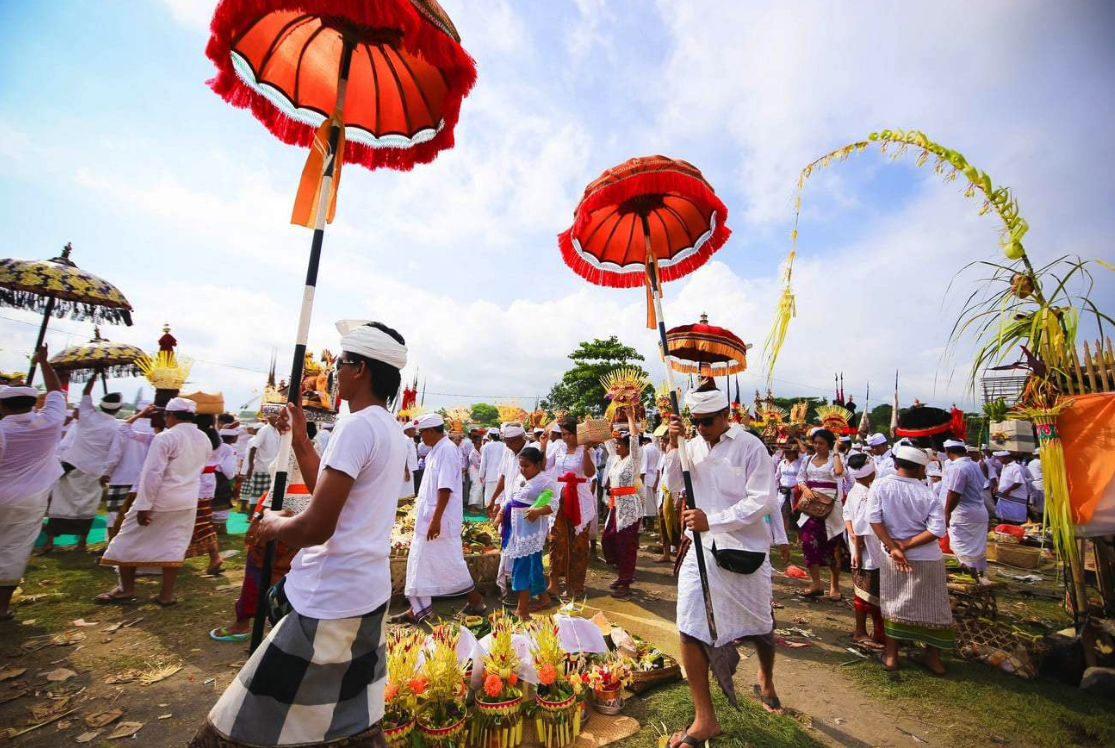By: I Nengah Subhadra
_________________________________________________________
English professor and Tourism In Triatma Surya Jaya Foundation
(MAPINDO, STP Triatma Jaya, and STIE Triatma Mulya)
_________________________________________________________
Mobile: 081 239 2677 3
Serving:
• Private English for public & in-house training
• Private Indonesian to foreigners
• Guidance IELTS, TOEIC, and TOEFL
• foreign language translations sworn
• Presentation of seminars and tourism research
• Consultation of tourism development
______________________________
Motto: “Quality is our Prime Concern
______________________________
The number of land had changed hands to another, increasing the amount of poverty and crime, and the creation of a lazy youth work has been used as the basic reason by some people to claim that Tajen is an activity that can plunge people into the life of a steep and dark. Why not be the only Tajen cause damage to natural and cultural Bali happened today? Is so hard there pengarus Tajen human life must be destroyed so that its existence? The mindset of people who are not narrow and comprehensive (holistic) resulted in an assessment of the Tajen only one eye and was always regarded as an activity and negative social interactions in public life, and not many know that Tajen is a culture and even in Bali, Tajen can known as one of the original local culture (indigenous culture).
Cultural characteristics
Tajen clearly has cultural characteristics. As mentioned by Reisinger (2003), a culture has ten characteristics, including: functions, social phenomenon, has a provision, can be studied, only present in a particular group, value, can dikomonikasikan, dynamic, has been running for a long time, could satisfy the desire within the group.
For the majority of people, Tajen been used as media to speculate keberuntuangan to complain but many were made as a means of entertainment Tajen particularly for those with money because they are the Tajen just for fun only and not to seek victory in the form of money. In addition, Tajen also has served as a land to try or source of livelihood such as trading, maintenance services chickens, motorcycles and others.
Tajen is a social phenomenon in the social life of the community and almost every area like Bali, Java and Sumatra that have Tajen elsewhere often called a cockfight that not only rang if bebotoh the Balinese only, but also from other tribes such as Java, Lampung , Batak and Palembang. Rules of the game and the device is also similar to Tajen in Bali because of this culture was taken and developed directly by the bebotoh transmigrants who migrate to these areas. In kegiatanya, Tajen have certain rules such as the determination to win the fight-the defeat of the chicken and the measurement of time to declare defeat his opponent who only understood by the bebotoh only and only be used at Tajen life course. When out of the arena Tajen, the rule was not applicable and meaningful in other social groups.
The terms used in the Tajen activities can only be learned by anyone who is interested in at it and not inherited or derived from previous generations and continued by the next generation. So is how to determine the opponent aduannya chicken, usually taught by the bebotoh who have more and longer eat Tajen salt in the world. Another example to be learned is how to tie spurs (deadly weapon for the enemy). Someone should be trained and have special skills to do so not everyone can do it bebotoh.
Cok and uneven is the language most commonly heard in Tajen. So it is clear that there komonikasi verbal and non verbal among gamblers chicken. In addition, the existence of Tajen very dynamic and always follow the development era. Type of chicken pitted from ordinary chicken, chicken increased to telescope, Bekisar and even until the chicken Bangkok. Once the tool is also at stake, that might be used to bet with thin holes, but now using the prevailing money as Rupiah. Food chicken Jagonya likewise. Once the chicken just to eat cassava dikasi but now has changed given rice, maize and concentrates with a high nutritional content and better. And even, some roosters are given extra strong medicine (supplement) before Tajen competed in the arena so that they can turn off his opponent in an instant.
Tajen not a new activity, and can even be said that we are living now here is a much newer or younger than the existence of Tajen. Tajen continued existence of antiquity, is now and will continue to exist until the future.
Cultural elements
For the bebotoh, Tajen has its own satisfaction compared with other activities. Starting from confinement chickens, maintenance, complaints to the victory of his favorite chicken. Satisfaction is what used to be one element and the core and value (value) of intangible culture, but can be felt (intangible) as mentioned by Hofstede (1997). Meanwhile, three other cultural elements such as symbol, ritual is a hero and a real cultural elements that can be seen with the eyes (tangible). The two outer elements of culture (symbol and hero) is the most frequently debated and commented upon by the common people without looking further two elements that are more in the most important part of cultural rituals and values of existence Tajen. Within a community (eg bebotoh) social interaction will occur (Gidden, 1989). One of the social interaction in the form of betting or gambling money among bebotoh, often used as the main reason and the scapegoat for the claim that Tajen not deserve to be called as a culture.
The language used as a choke and the odd symbols are very common language heard in Tajen, this symbol can only be communicated by the gamblers in the arena Tajen chicken. So is the chicken and the chicken colors like biying, ijo, serawah, kelau and a symbol-brunbun special symbol that is usually used in determining the opponent aduannya chicken. Parties involved in activities such as bebotoh Tajen, twin builders, and artisans parentheses saye chicken called culture hero or the perpetrator, and could be called Tajen stakeholders. While serving activities and segehan offerings or prayers to invoke the victory by the bebotoh just before starting an activity Tajen cultural rituals.
Modernism vs. Postmodernism
Modernism and religious views are always seen and justify something from one of the two aspects that should like; positive-negative, good-bad, halal-haram, black and white and so on have resulted in Tajen considered one eye and regarded as a negative activity. Positive law in force in Indonesia is also characterized by modernism that in determining the decision is always based on right and wrong, so that all forms of gambling are illegal activities and prohibited as stipulated specifically in the Book of shrimp Law Criminal Law (Penal Code) Article 303. Regulation of gambling regulation in Indonesia do have to respect by all citizens Indonesai and enforced by the law enforcement officers. Thus, the only social interaction in the form of bebotoh to perjudianlah prohibited and subject to sanctions. Bebotoh social interaction while others are part of the culture and not an illegal act.
Another case with postmodernism’s view, the view and assess the two aspects of a case with the same order because of his views were on the dichotomy (good-bad) and not take sides or be in one position. That is, let all things exist and develop in accordance with its natural because everything is already has the form, function, each objective. Tajen so not only seen as illegal activities and conflict with religious teachings, but also have rituals and the actual values should be preserved. Postmodernism perspective is very wise, as always respect and uphold the existence of the dichotomy and impartial to one side and mempermasahkan no difference. This mindset will be clearly contrary to the thinking of experts and law enforcement officials and clergy.
The author, a student of Doctoral Program Cultural Tourism Division, University of Lincoln, Brayford Pool, United Kingdom.
Reference:
Giddens, A. (1989). Sociology. United Kingdom: Polity Press.
Hofstede, G. (1997). Cultures and Organizations: Software of the Mind. New York: McGraw Hill.
Reisinger, Y and L.W. Turner (2003). Cross-culture Behavior in Tourism: Concept and Analysis. Great Britain: Butterworth Heinemann.














